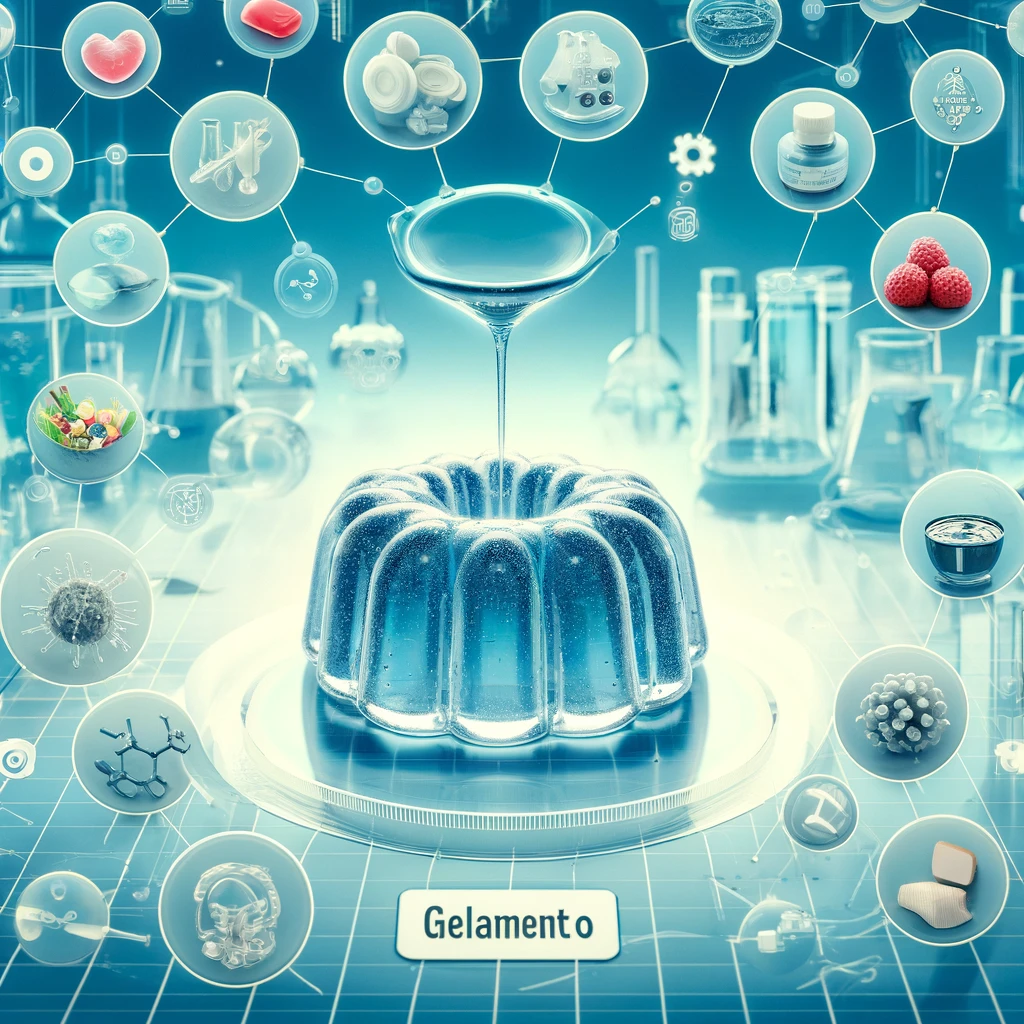Gelamento is a term that has been gaining attention in various fields, but what exactly does it mean? In simple terms, gelamento refers to the process or state of something becoming gel-like or forming a gel. This concept is applied in numerous industries, including food, pharmaceuticals, and materials science. Let’s dive deeper into the different aspects of gelamento, its applications, and why it is important.
What Causes Gelamento?
Gelamento occurs when certain substances undergo a physical or chemical change, leading to the formation of a gel. This can happen due to:
- Temperature Changes: Many substances gel when exposed to certain temperatures. For example, gelatin forms a gel when cooled after being dissolved in hot water.
- Chemical Reactions: The reaction between certain chemicals can cause gelation. For instance, the mixing of sodium alginate and calcium chloride results in the formation of a gel.
- pH Levels: Some substances gel in response to changes in pH. An example is the gelation of proteins in food processing, which can be induced by adjusting the pH.
Why is Gelamento Important in Food Industry?
Gelamento plays a crucial role in the food industry for several reasons:
- Texture Enhancement: Gels can improve the texture of food products, making them more appealing to consumers. Examples include jelly, custards, and gummy candies.
- Stabilization: Gelling agents help stabilize emulsions and suspensions, ensuring that ingredients are evenly distributed and remain stable over time. This is important in products like salad dressings and sauces.
- Encapsulation: Gels can encapsulate flavors, nutrients, and other ingredients, releasing them at a controlled rate. This is used in the production of fortified foods and flavor enhancers.
Who Uses Gelamento in Pharmaceuticals?
The pharmaceutical industry utilizes gelamento for various applications, including:
- Drug Delivery: Gels can be used as carriers for drug delivery, allowing for controlled release of medication over time. This improves the efficacy and reduces the side effects of drugs.
- Topical Applications: Gels are commonly used in topical medications like creams and ointments because they provide a smooth, spreadable consistency.
- Wound Care: Hydrogel dressings, which form gels upon application, are used in wound care to provide a moist healing environment, promote healing, and reduce pain.
How Does Gelamento Affect Material Science?
In materials science, gelamento is significant for the development of advanced materials with unique properties. These include:
- Hydrogels: Hydrogels are networks of polymer chains that can hold large amounts of water. They are used in a variety of applications, from contact lenses to biomedical devices.
- Aerogels: Aerogels are extremely light and porous materials derived from gels. They have applications in insulation, filtration, and as catalyst supports.
- Smart Materials: Gels that respond to environmental stimuli, such as temperature or pH, are being developed for use in smart materials. These materials can change their properties in response to external conditions, making them useful in sensors and actuators. Also read What Are Hewlett Packard Refurbished Products?
What Are Common Gelling Agents?
Several substances are commonly used as gelling agents across various industries:
- Gelatin: Derived from collagen, gelatin is widely used in food and pharmaceuticals for its gelling properties.
- Agar-Agar: Extracted from seaweed, agar-agar is used as a vegetarian alternative to gelatin in food products.
- Pectin: Found in fruits, pectin is used in the food industry to gel jams and jellies.
- Xanthan Gum: A polysaccharide used as a thickening and stabilizing agent in food and industrial products.
- Alginate: Derived from algae, alginate is used in both food and medical applications for its ability to form strong gels.
Why is Gelamento Crucial for Innovation?
Gelamento is at the forefront of innovation due to its versatile applications and ability to enhance product performance. Here’s why it is crucial:
- Versatility: The ability to control the gelation process allows for the creation of products with specific properties tailored to their intended use.
- Sustainability: Many gelling agents are derived from natural sources, making them more sustainable compared to synthetic alternatives.
- Consumer Preference: The improved texture and stability of gelled products meet consumer preferences, leading to higher satisfaction and better market performance.
- Health Benefits: In pharmaceuticals and medical applications, gels can provide more effective treatment options and improve patient outcomes.
What is the Future of Gelamento?
The future of gelamento looks promising, with ongoing research and development aimed at expanding its applications and improving its efficiency. Some of the exciting areas of exploration include:
- Bioprinting: Using gelation processes in 3D bioprinting to create tissues and organs for medical research and transplantation.
- Nanotechnology: Developing nanoscale gels for targeted drug delivery and advanced materials.
- Environmental Applications: Using gelation to create materials for water purification, waste treatment, and environmental remediation.
Conclusion
Gelamento is a fascinating and multifaceted process with wide-ranging applications in food, pharmaceuticals, and materials science. By understanding the factors that cause gelation and the various gelling agents used, we can appreciate the importance of this process in enhancing product performance and driving innovation. As research continues to uncover new possibilities, the future of gelamento holds exciting potential for advancements in technology and industry.



